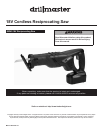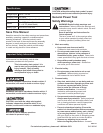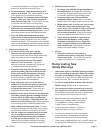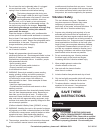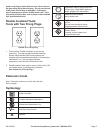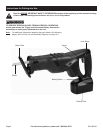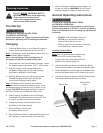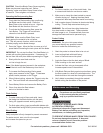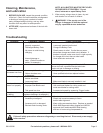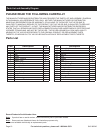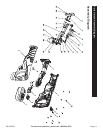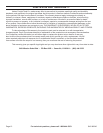
Page 8 For technical questions, please call 1-800-444-3353. SKU 68240
CAUTION! Check the Blade Clamp Screw regularly;
Blade may become loose after use. Before
tightening, make sure Balde Clamp Screw is free
of sawdust. Then retighten until secure.
Operating the Reciprocating Saw
1. Firmly hold the Reciprocating Saw, positioning
the Blade near the work piece. Place the
Base Plate on the surface to be cut. Align the
Saw Blade with the direction of the cut.
2. To activate the Reciprocating Saw, press the
Lock Button. The Trigger will not activate
unless the Lock Button is pressed.
CAUTION! Make sure the Blade Plate is set
rmly against the material to be cut before
use. This will prevent vibration, which can lead
to blade jumping and/or blade damage.
3. Press the Trigger. Allow the Saw to come up to full
speed before contacting the work piece with the blade.
IMPORTANT: Do not start the Saw if the Saw Blade is in
contact with anything before operation. If necessary, lift
the tool from the work piece before squeezing the Trigger.
4. Slowly slide the saw blade onto the
cut line to begin the cut.
Note: If the blade becomes jammed in the workpiece,
turn off the tool and lift the blade away from the cut.
5. To increase the Reciprocating Saw’s speed,
apply more pressure to the Trigger. To decrease
speed, lessen pressure on the Trigger.
6. When nished cutting, release the Trigger to stop the
tool. The Lock Button will automatically release.
7. Press Battery Button and remove the Battery Pack.
8. Clean, then store the Saw indoors
and out of children’s reach.
Flush Cutting
1. To make close cuts to oors and walls, insert
the blade into the Blade Holder with the teeth
facing UP (opposite normal working position.)
2. For ush pipe cutting, insert more exible blades with
the blade teeth facing DOWN (normal working position).
Wood Cutting
Verify workpiece is rmly clamped to prevent movement.
For easier control, start cut with a low speed
and increase the speed as you cut.
Metal Cutting
1. For ferrous metals, use a ner-tooth blade. Use
a coarse-tooth blade for non-ferrous metals.
2. Make sure to clamp thin sheet metals to prevent
vibration during cut. Keeping the sheet metal
clamped will also keep the sheet metal from tearing.
3. Add a couple drops of lubricant to sheet metal being
cutting. This will help reduce heat during cut.
WARNING! Do not force the cutting blade when
thin sheet metal or sheet steel. These materials
will take longer to cut. Excessive blade force can
damage the blade and lead to personal injury.
Pocket Cutting
WARNING! Do not cut into areas where
you cannot identify any possible hazards
behind or inside the surface being cut.
1. Mark the pocket or internal hole to be cut out.
2. Insert cutting blade with teeth facing
down in Saw and secure into place.
3. Angle the Saw so that the back edge of Blade
Plate is resting on the work surface.
4. Activate the Saw, using a slow speed at rst.
Increase speed once cut has started.
5. With Blade Plate set rmly against work surface, swing
the Saw upward in a slow but controlled motion. The
blade should cut into and then through the material.
6. Verify blade is completely through the material
before cutting the remainder of the pocket.
Maintenance and Servicing
Procedures not specically explained
in this manual must be performed
only by a qualied technician.
TO PREVENT SERIOUS INJURY FROM
ACCIDENTAL OPERATION:
Unlock and release the Trigger and disconnect
Battery Pack before performing any inspection,
maintenance, or cleaning procedures.
TO PREVENT SERIOUS INJURY FROM TOOL FAILURE:
Do not use damaged equipment. If abnormal
noise or vibration occurs, have the problem
corrected before further use.



